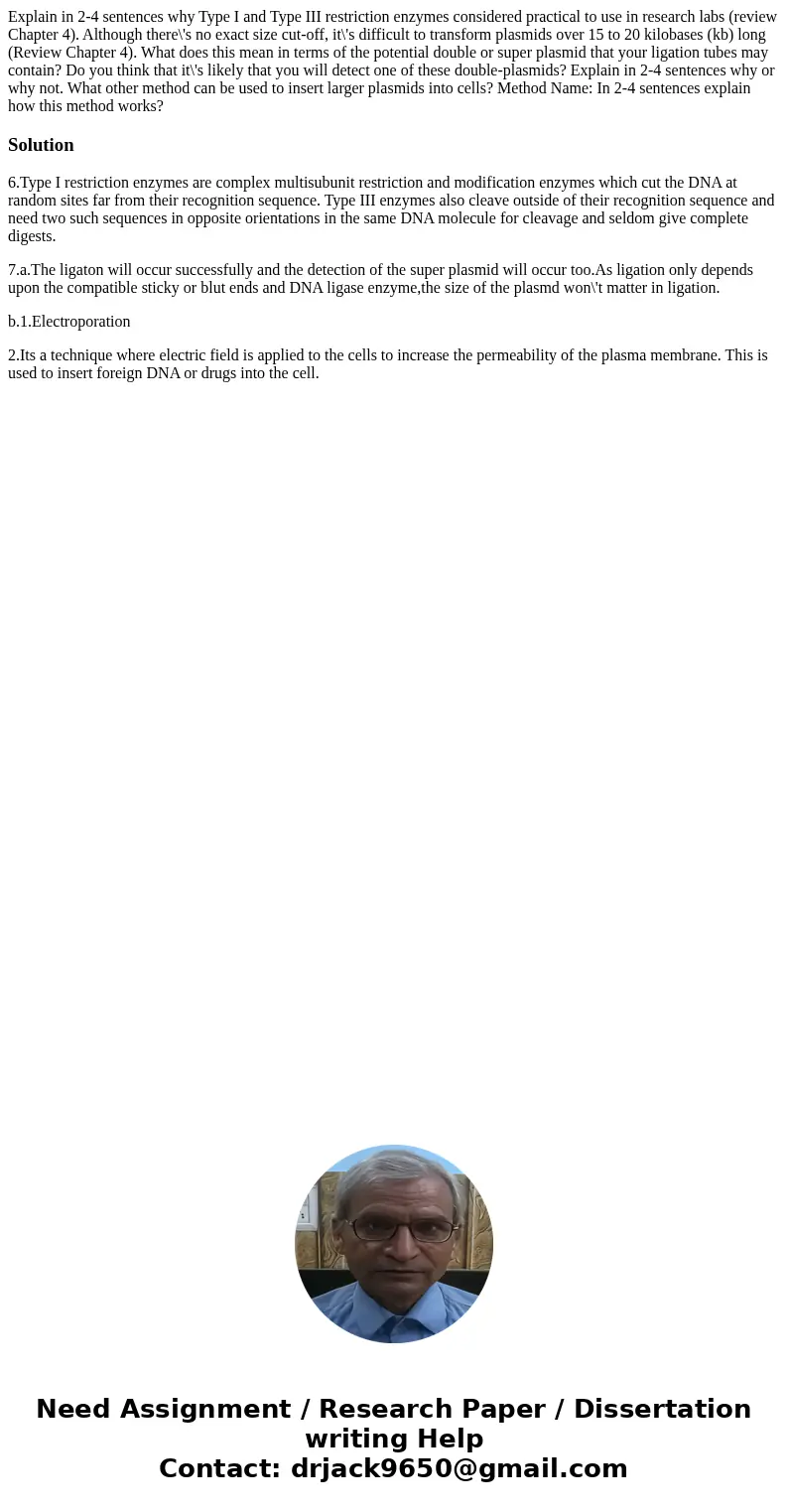Explain in 24 sentences why Type I and Type III restriction
Solution
6.Type I restriction enzymes are complex multisubunit restriction and modification enzymes which cut the DNA at random sites far from their recognition sequence. Type III enzymes also cleave outside of their recognition sequence and need two such sequences in opposite orientations in the same DNA molecule for cleavage and seldom give complete digests.
7.a.The ligaton will occur successfully and the detection of the super plasmid will occur too.As ligation only depends upon the compatible sticky or blut ends and DNA ligase enzyme,the size of the plasmd won\'t matter in ligation.
b.1.Electroporation
2.Its a technique where electric field is applied to the cells to increase the permeability of the plasma membrane. This is used to insert foreign DNA or drugs into the cell.

 Homework Sourse
Homework Sourse